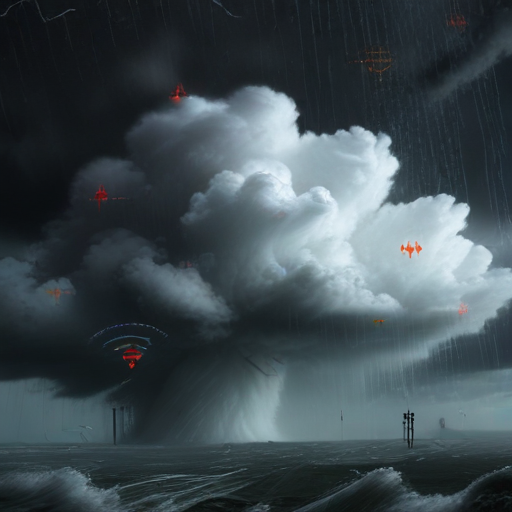A significant storm is approaching the West Coast, accompanied by a weather phenomenon known as a “bomb cyclone,” which has garnered attention for its alarming implications.
Bomb cyclone, a term frequently used in weather discussions, refers to what meteorologists formally label as bombogenesis. This term describes the rapid strengthening of a cyclone over a short timeframe, which can be seen in powerful storms like the one currently forecasted for Northern California and the Pacific Northwest.
So, what exactly is a bomb cyclone? According to the National Oceanic and Atmospheric Administration (NOAA), it occurs when a cyclone intensifies quickly in a region between the tropics and polar areas. This rapid intensification can happen when a cold air mass merges with a warmer one, often over ocean waters. To classify as a bomb cyclone, the storm must show a significant drop in atmospheric pressure—24 millibars or more within a 24-hour period, as explained by meteorologist Stephen Baron from the National Weather Service.
The impending storm on the West Coast is triggered by an atmospheric river—a concentrated band of moisture flowing from the Pacific Ocean—leading to heightened rainfall risks from Tuesday through Friday. The National Weather Service’s Weather Prediction Center has noted that this storm is intense enough to be classified as a bomb cyclone.
While bomb cyclones are anticipated to impact the West Coast, it’s important to recognize that they can form in various regions worldwide, including the Northwest Pacific and North Atlantic.
The storm is forecasted to bring severe precipitation, which may result in flash flooding and winter storms in higher elevations. High wind warnings are also anticipated across some West Coast areas, with hazardous travel conditions and expected power outages. Infrastructure and trees could face considerable damage due to the high winds.
Bomb cyclones have influenced numerous significant weather events across the United States in recent years, including Hurricane Milton, which made landfall in Florida as a Category 3 hurricane last month. Another example includes a bomb cyclone from 2018 that produced snow in the Southeast and hurricane-force wind gusts.
As the West Coast braces itself for this challenging weather event, it’s important for residents to stay informed and prepared. While the storm may bring adverse conditions, it also serves as a reminder of nature’s power and our capacity to adapt and recover in the face of adversity. In the spirit of resilience, communities can come together to support one another during this period.
